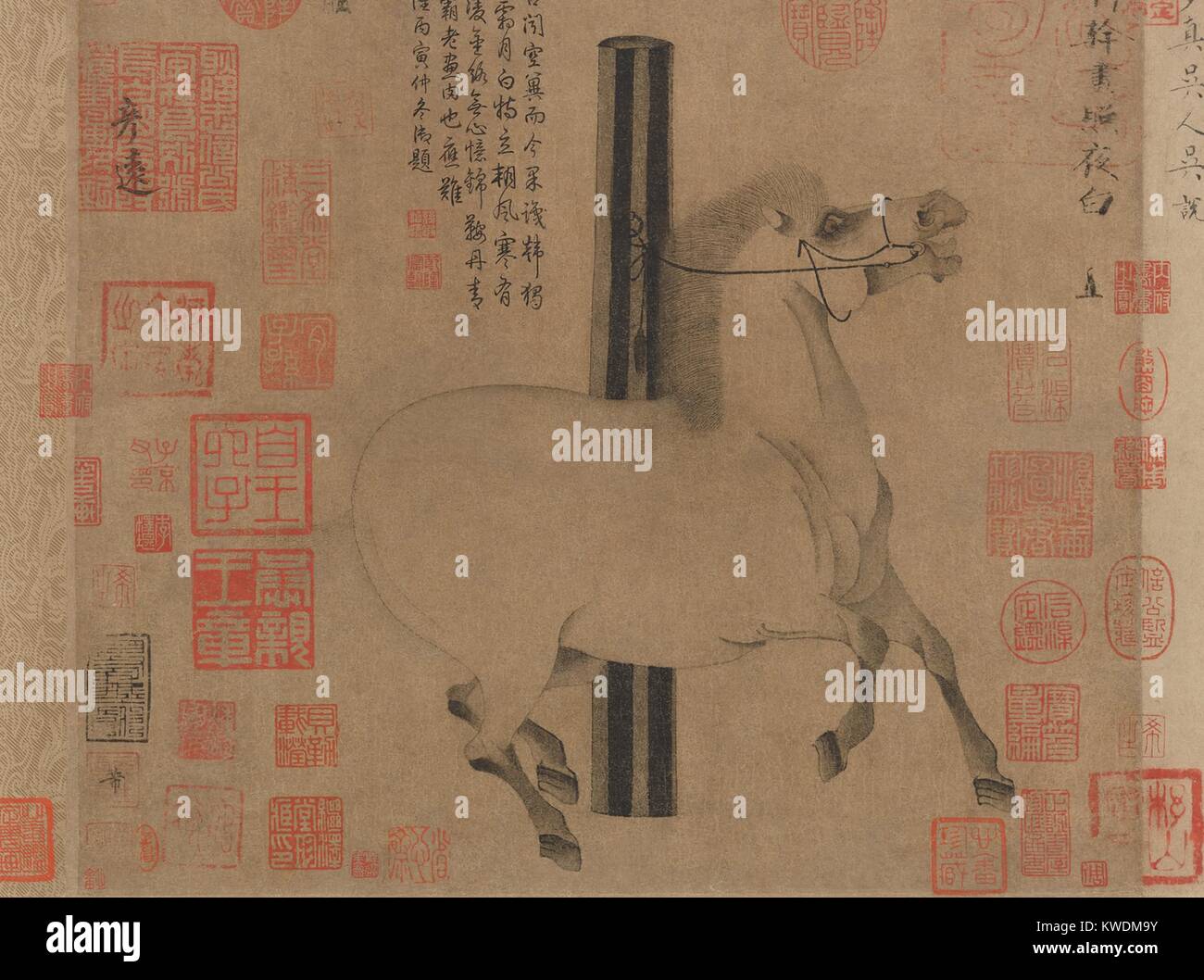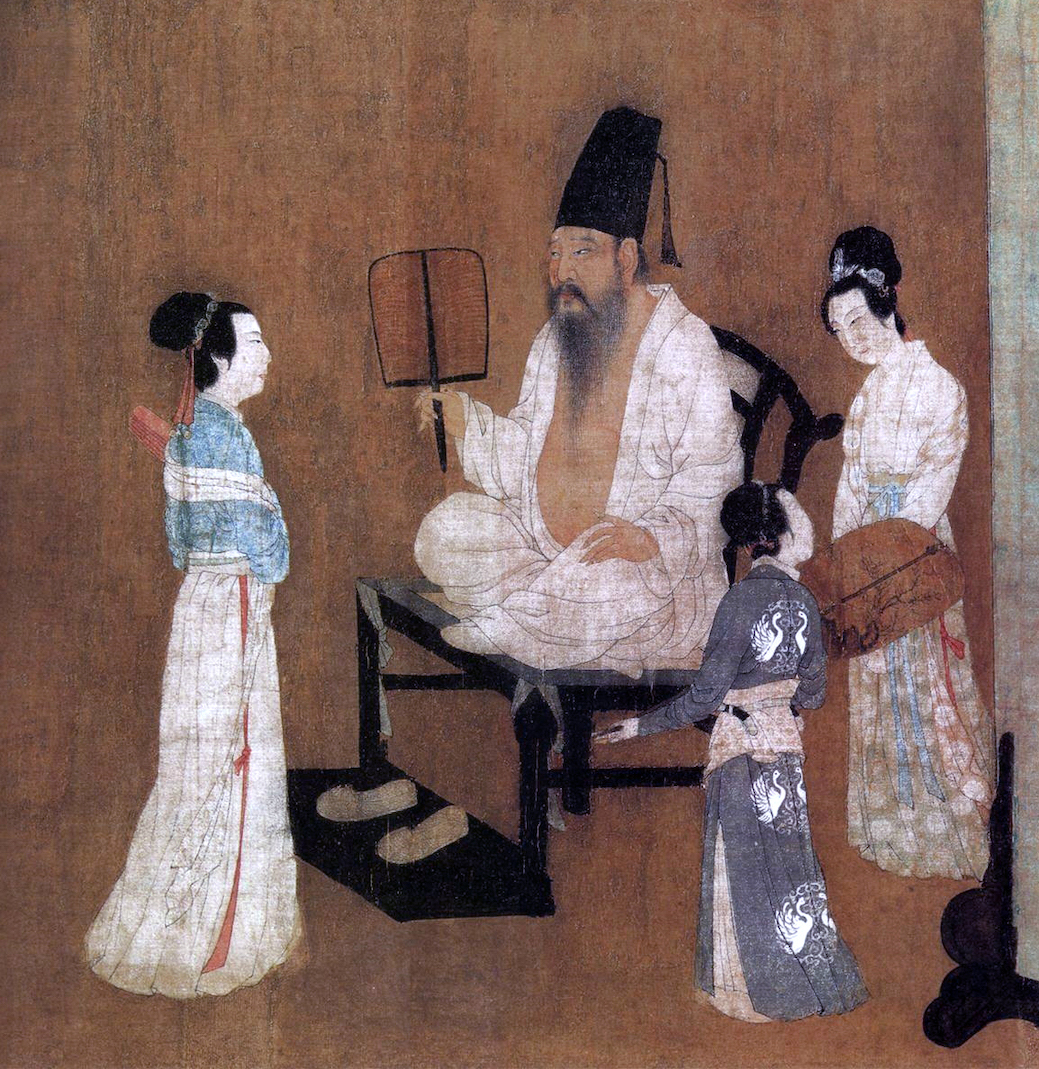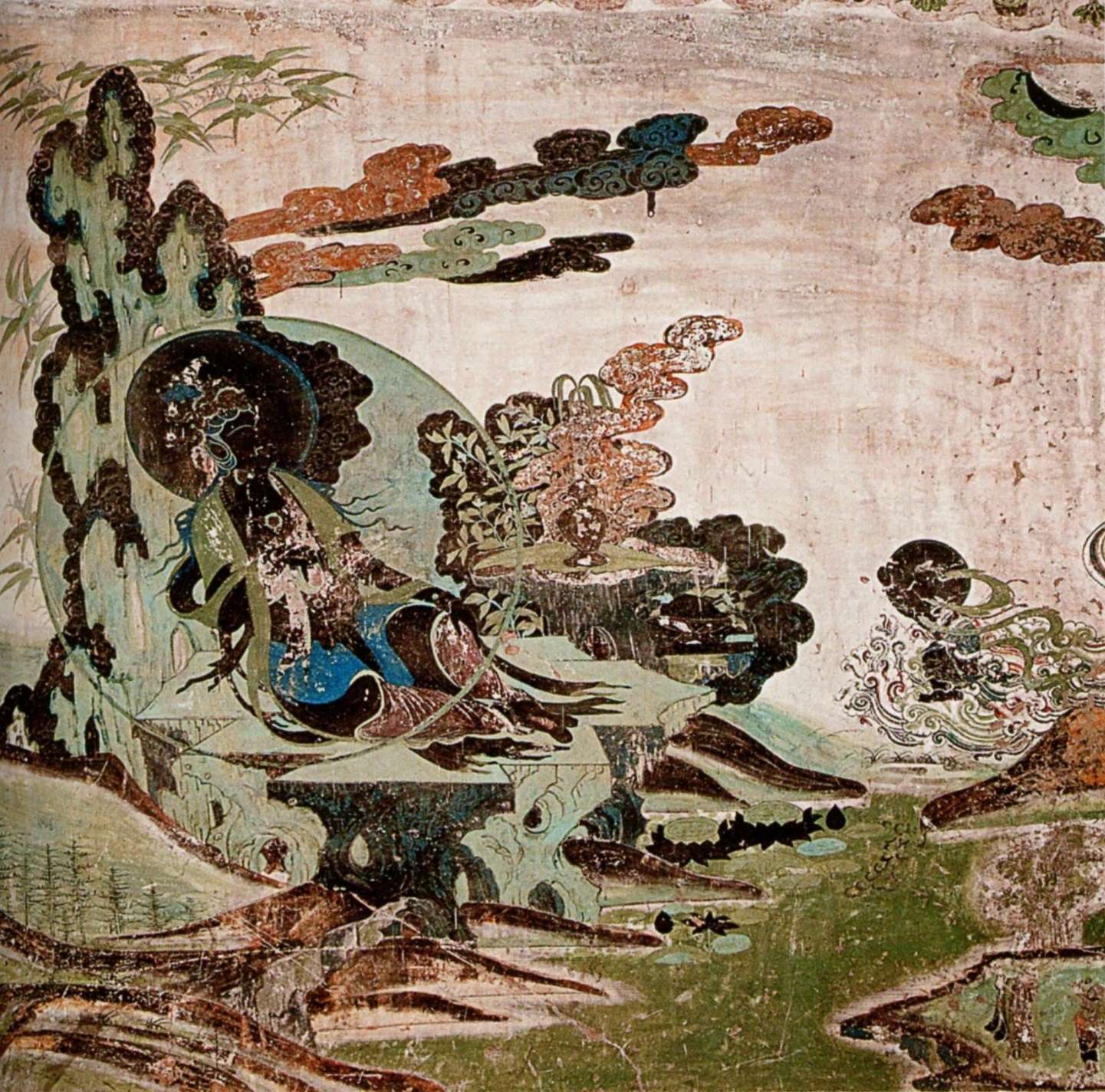Large Antique Framed Giclee Painting. Chinese Early Sung Dynasty. After Han Gan's 12th Century Silk Painting.** cheapest
THIS IS NOT A MODERN DAY OFFSET LITHOGRAPH PRINT.
PLEASE READ ALL OF THE INFORMATION IN THE LISTING AND VIEW ALL THE PICTURES, AS THEY ARE PART OF THE CONDITION AND DESCRIPTION. IF YOU HAVE ANY QUESTIONS, OR WANT TO MAKE AN OFFER, PLEASE CONTACT ME. ALL OF MY ITEMS ARE SHIPPED FULLY INSURED, AND FULLY GUARANTEED TO BE AS PICTURED AND DESCRIBED. SHOULD YOU RECEIVE IT IN ANY OTHER CONDITION CONTACT ME IMMEDIATELY FOR PREPAID RETURN AND REFUND. (See disclaimer below).
Giclée Painting after Sung Dynasty "Tribute Horses"
Framed Dimensions: 30.3" W x 27.25" H
Image Dimensions: 16" W x 13" H.
**The Tribute Horse after a Sung Dynasty painting circa mid-12th century depicting Emperor Xuanzong's flight to Shu accompanied by his entourage on horseback. This is an original Giclee painting excerpt from Chinese Tang Dynasty (618-907) after artist Han Gan's 12th Century Sung Dynasty (960-1279) Chinese original hand painted painted silk scroll, "Central Asians Presenting Tribute Horses" (PICTURE #7 )***, now part of the permanent collection of the Indianapolis Museum of Art. Titled "Tribute Horses," this depicts a pair of mounted riders, leading and corralling a large white horse between them. This work is presented under glass, with a triple matte and a black liner, set in a wooden frame, and wired for hanging. The work has a worn surface reflecting the age of the original piece. (I do not know its exact age).
ORIGINAL COA OF ORIGINAL PAINTING CAN BE SEEN IN PICTURE 6 AND COPY WILL BE INCLUDED..
DISCLAIMER: Original Central Asians Presenting Tribute Horses, handscroll, traditionally attributed to Han Gan (ca. 715–after 781). Ink, color, and gold on silk, 12 3/16 x 75 7/8 in. (Courtesy, Freer Gallery of Art and Arthur M. Sackler Gallery, Smithsonian Institution, Washington, D.C., Gift of Charles Lang Freer, F1915.16.) Charles Freer purchased this in San Francisco in 1915 from the L.C. Pang Collection (Pang Lai-chen) (Pang Yuanji) (1864–1949), Chekiang, China, through C.T. Loo.
***Han Gan ((韓幹, 韩干, ca.715-after 781) was a Tang Dynasty painter, who, though recorded as having done wall paintings on Buddhist and Daoist themes, is best remembered for his paintings of horses. He came from a poor family cheapest in either Chang'an, modern-day Xi'an, Shaanxi; Lantian, modern-day Shaanxi; or Daliang, modern-day Kaifeng, Henan. As a young man, Han Gan was recognized by Wang Wei, a prominent poet, who sponsored Han in learning arts. Han emphasized the strength and nobility of the horses of the Tang Empire by using a tautly controlled line and compositions of great clarity. The horse as a subject of painting was continued by Li Gonglin (李公麟) in the Sung Dynasty (960–1279) and by Zhao Mengfu (趙孟頫) in the Yuan Dynasty (1271–1368), among others.
The Sung dynasty (Chinese: 宋朝; pinyin: Sòng cháo; 960–1279) -- Chinese dynasty that ruled the country during one of its most brilliant cultural epochs; commonly divided into Bei (Northern) and Nan (Southern) Sung periods, as the dynasty ruled only in South China after 1127. It was an era of Chinese history that began in 960 and lasted until 1279. The dynasty was founded by Emperor Taizu of Song following his usurpation of the throne of the Later Zhou, ending the Five Dynasties and Ten Kingdoms period.




